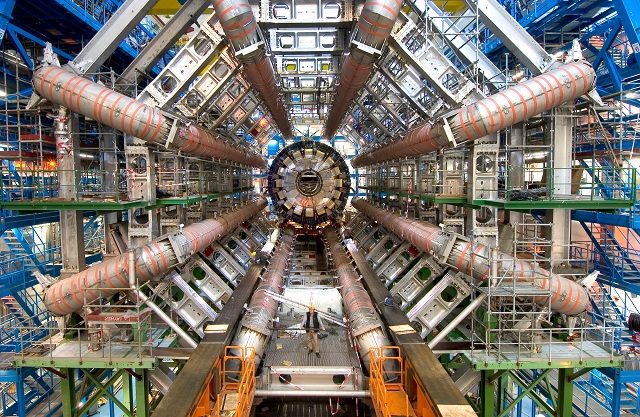We hear a lot about scientists and their bizarre ideas, when in fact it is engineers who put these ideas into practice for real-world applications. At its core, engineering is the science of building things, such as machines, to apply theoretical scientific principles to real-life situations. For example, a theoretical timekeeping system, no matter how complex or accurate, is useless without a working clock.
Of course, the greatest engineering marvels of our time are a little more advanced and complex than a watch. Over the past few years, engineers around the world have built many things that were once thought impossible, or at least in the realm of the distant future.
10. Parker Solar Probe

Despite its apparent proximity to Earth, we know very little about what is happening to our Sun, especially on its surface. It appears to be colder than its atmosphere or crown , where all the sun's heat actually comes from. It doesn't make any sense - it's like feeling hotter the further you get from the fire.
This is just one of many things we don't know about the Sun, and until recently, reaching its corona to take measurements was considered an impossible futuristic task. Probe NASA "Parker" broke that barrier on April 28, 2021, when it became the first man-made object to touch the sun's atmosphere. It was Parker's eighth flyby, and it gave us some important clues about how solar winds .
The probe is still in orbit around the Sun and is expected to make another close flyby sometime in 2025.
9. Mind-controlled prosthetics
Modern prosthetics are themselves one of the greatest feats of engineering achievements of all time. For most of our history, amputees either had to live without limbs at all or make do with rudimentary, uncomfortable models made of leather, wood, and other basic materials. Only now have prosthetics begun to look and almost feel like real limbs. However, they are far from reality, as it is impossible to recreate the neural connection between a living organ and the brain using a machine.
Mind-controlled prosthetics are a new class of prosthetics that can be controlled by the mind, although they are still in their early stages. One prototype developed by Swedish scientists, connects with the patient's nerves, muscles and skeleton, allowing them to have much greater control over their fingers and wrists than previously thought possible. It is currently being actively used by three Swedish patients and does not require any additional care or monitoring from a health care professional, unlike most prosthetics we have right now.
The technology could be available to patients outside Sweden within this year, the researchers say. While it's still not the same as a real limb, it does give us a glimpse of what the future of prosthetics could look like.
8. Burj Khalifa

Sometimes engineering is about pushing the boundaries of not just engineering but other fields of study, which contributes to our overall understanding of the world. However, this is not necessarily the case, as good engineering can also be about building really tall and beautiful building.
Currently, the tallest building in the world is the Burj Khalifa, which is 2,717 feet tall. unusually high - about 500 feet higher , than its closest competitor, making you wonder how it even stands upright.
The Burj Khalifa, built by Chicago firm Skidmore, Owings & Merrill, took more than six years to complete and first opened to the public in January 2010. years . it also absorbs strong wind.
There are a total of 163 floors, each built differently to reduce the effects of the wind as you go higher. Besides residential buildings and shopping areas, the building has several observation decks , including the two-story At The Top on the 124th and 125th floors, as well as luxury restaurants, corporate spaces and a three-story lounge.
7. Floating cities
Rising sea levels are a huge problem for the Netherlands, as more than a third of the country's land area is already below sea level. current sea level. To counter the worst effects, a Dutch architecture firm has developed Schoonschip: a conceptual residential project in Amsterdam that combines architecture and sustainable design to create a completely new way of living.
The entire area is built on floating arks in the Johan van Hasseltkade Canal and currently houses around 100 people in 46 residential units. It is an alternative to all the land-based models we currently have, although it is not new - many local communities around the world still live in floating settlements.
But Schoonschip is more than just a trendy houseboat. Every part of its design is meant to be sustainable and reusable, with all decision-making in the hands of the residents. For example, all energy generated in the complex is produced by renewable energy sources and distributed to residents via blockchain .
6. Nanorobots
Nanorobots — or microscopic robots that can perform any function you want — have appeared in science fiction in various forms. However, until recently, something like this was virtually impossible to make. Thanks to advances in theoretical science and nanotechnology over the past few years, we now have the first prototypes of future nanorobots.
As you might expect, these tiny machines have quite a few medical applications. The group Researchers from the University of California, San Diego have developed nanobots that can cleanse blood of toxins and pathogens. . Another from the University of New South Wales has found a way to teach these bots to repair themselves using DNA , blurring the line between living organs and artificial robots.
5. Invisibility cloak
When we think of an invisibility cloak, we think of a hypothetical material that could make us truly invisible. (Or, just as likely, we think of Harry Potter. Naturally.) Many prototypes have been tried, though almost all of them either relied on cheap tricks of the light or were too bulky to really do anything.
The only material that comes close to invisibility in real life is Quantum Stealth , developed by a Canadian corporation known as Hyperstealth Biotechnology Corp. you are invisible.
From the videos released by the firm, it is clear that the material is designed to successfully reflect light around any object, including large cars. However, we do not know exactly how it works, as this information is still classified due to possible military applications in the near future.
4. Mind reading

It’s one thing to scan the brain for electrical and neurological signals, and another to read and record what’s going on in our heads as we perceive it. The former can be accomplished with many of the machines found in your local hospital. The latter, however, is a barrier we never thought machines could overcome, since consciousness is much more than just electrical waves passing through the brain.
As it turns out, this is not true. We already have machines that can identify song, playing in your head, with the help of AI, as it studies the connections between brain signals and specific pieces of music using machine learning. Or even recreate image, that you think of, albeit with a lesser degree of precision than the songs (but still high enough to be creepy).
3. 4D objects
We've all heard of 3D printing, which involves creating anything you want if you have the basic ingredients and a plan. It's a revolutionary concept in itself, and has been successfully used in a variety of applications. Someday, it may even allow us to print living organs or even living creatures.
4D simply builds on this concept, except that the printed things can now react to different conditions in real time. Quite a few 4D materials, also called “smart materials,” have been developed in the last few years, including self-healing plastics that can eliminate wear and tear and make plastic items infinitely reusable, fabrics that can change their molecular structure depending on weather conditions . , and shoes that can completely repair themselves with the help of additional gel, among other things.
2. Artificial intelligence

Artificial intelligence isn’t exactly a new concept. First coined in 1956, the term has come to refer to any type of machine or algorithm that can mimic human intelligence. Early experiments involved rudimentary, mildly intelligent machines , such as the Johns Hopkins beast, although the technology was still held back by a lack of processing power and other computational limitations to make a real impact.
Fast forward to today, and artificial intelligence is one of the most revolutionary developments of the last few years, thanks to the proliferation of powerful graphics processing units (or GPUs), machine learning, and the advent of “big data.” Neural networks, as one example of their many implementations, are able to think and compute just like the human brain, which includes the ability to learn from their mistakes.
AI has revolutionized many fields, including medicine , logistics, space exploration, marketing and almost anything that involves analyzing large amounts of data. This also, unfortunately, includes military action, as militaries around the world develop their own technologies based on AI, that will be used on the automated battlefields of the future.
1. Large Hadron Collider

The Large Hadron Collider is perhaps one of the most important engineering feats ever undertaken. It is underground tunnel 17 miles long , located on the border between France and Switzerland, whose main purpose is to collide different types of particles at very high speeds in order to understand the true nature of reality.
First launched in 2008, it was a massive project not only in scope but also in the scale of its goal. Organized by CERN — or the European Organization for Nuclear Research — it was designed and built by more than 10 000 scientists, engineers and other experts from around the world. At over $10 billion, it is the most expensive machine ever built, and we can now say it was worth it. Since its first launch, the LHC has made many important fundamental contributions to theoretical physics, including the much-publicized discovery of the Higgs boson in 2012 .














Оставить Комментарий